If you ever find yourself stranded on a desert island in Malaysia, or any other tropical location around the world, the one thing that could be your saving grace is the multi-purpose coconut palm. The coconut palm grows quickly and provides fruit year-round. It’s definitely the gift that keeps on giving. But this tree goes beyond just gifting the planet with coconuts; the entire tree is creatively usable! From making palm frond roofing material and broom bristles to various decoratives, musical instruments and kitchen utensils, the list of its uses is lengthy indeed. But of all the uses of coconut palms and coconuts, it is its amazing by-product of virgin coconut oil that fascinates me the most.
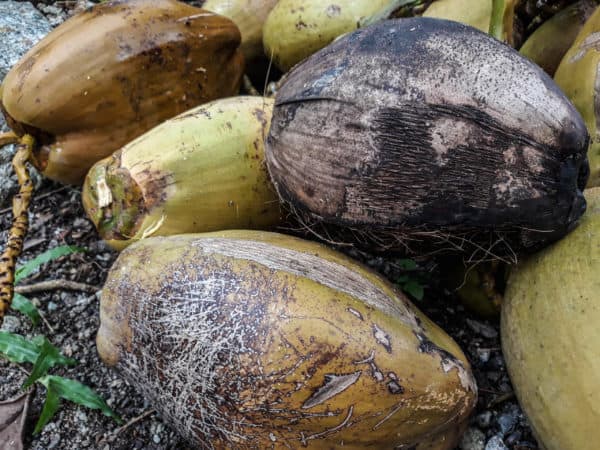
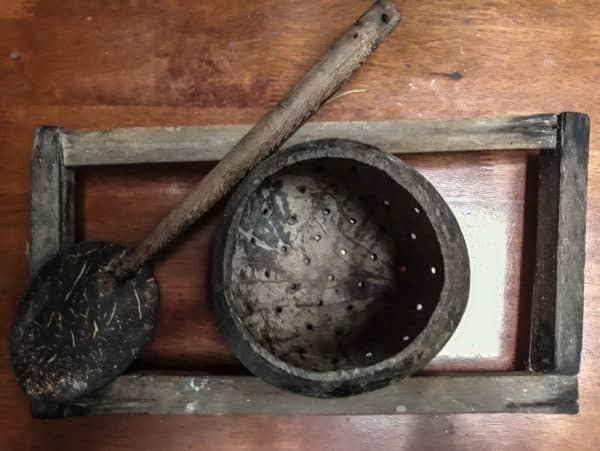
A Little Coconut History
The word ‘coconut’ can be used to reference the entire coconut palm tree. It is derived from the 16th century Portuguese and Spanish word ‘cocos’, which means grinning face. The grinning face inspiration came from the three small indentations on the coconut shell that resemble facial features (at least the eyes and nose/mouth part).
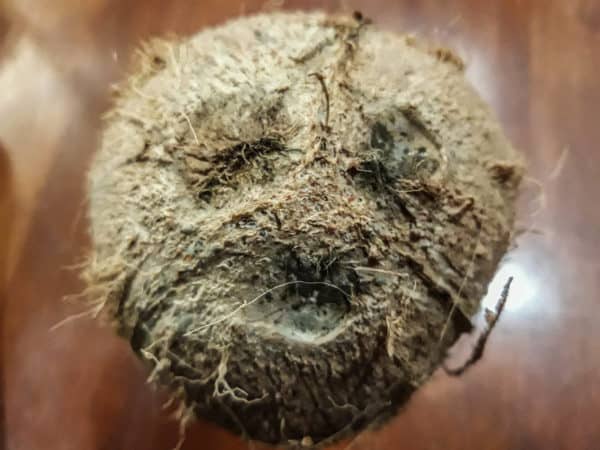
To those olden-days Portuguese and Spanish folks, the coconut shell reminded them of a Latin folklore ‘ghost monster’ character affectionately known as ‘coco’. The first recorded use of this word was in 1555. But of course, the hearty coconuts have been around much longer than that; the oldest coconut fossils, found in Australia and India dated back up to 55 million years ago!
Coconut Water vs Coconut Milk
This may be obvious to some, but for those not well versed in coconuts, coconuts do not contain coconut milk. Whether young green coconuts or older brown coconuts, the sloshing sound one hears when shaking an unopened coconut is coconut water. Coconut water is a clear liquid that comes directly from the core of the coconut. Another wonderful by-product of coconuts, coconut water is considered by many athletes to be the ultimate natural sports drink due to its isotonic electrolyte balance. It can also be used as an emergency IV hydration solution because it mixes easily with blood; well utilized by Asia-Pacific based medical teams during World War II.
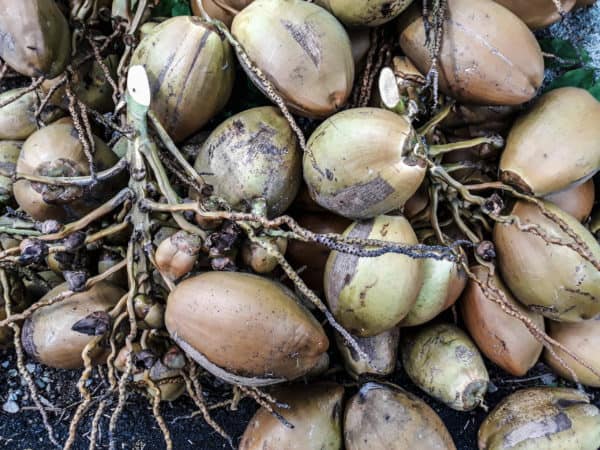
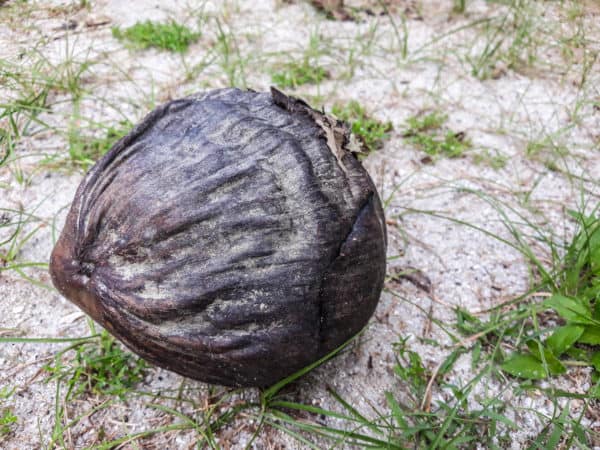
So, where does the coconut milk come from, you ask? It comes from the grated meat of the mature (brown) coconuts. Just like any nut milk, the grated coconut meat is mixed with a little water and squeezed or pressed to extract every precious drop of nut liquid. Coconut milk is used in plenty of delicious recipes, but it is also where coconut oil comes from. A by-product of a by-product if you will.
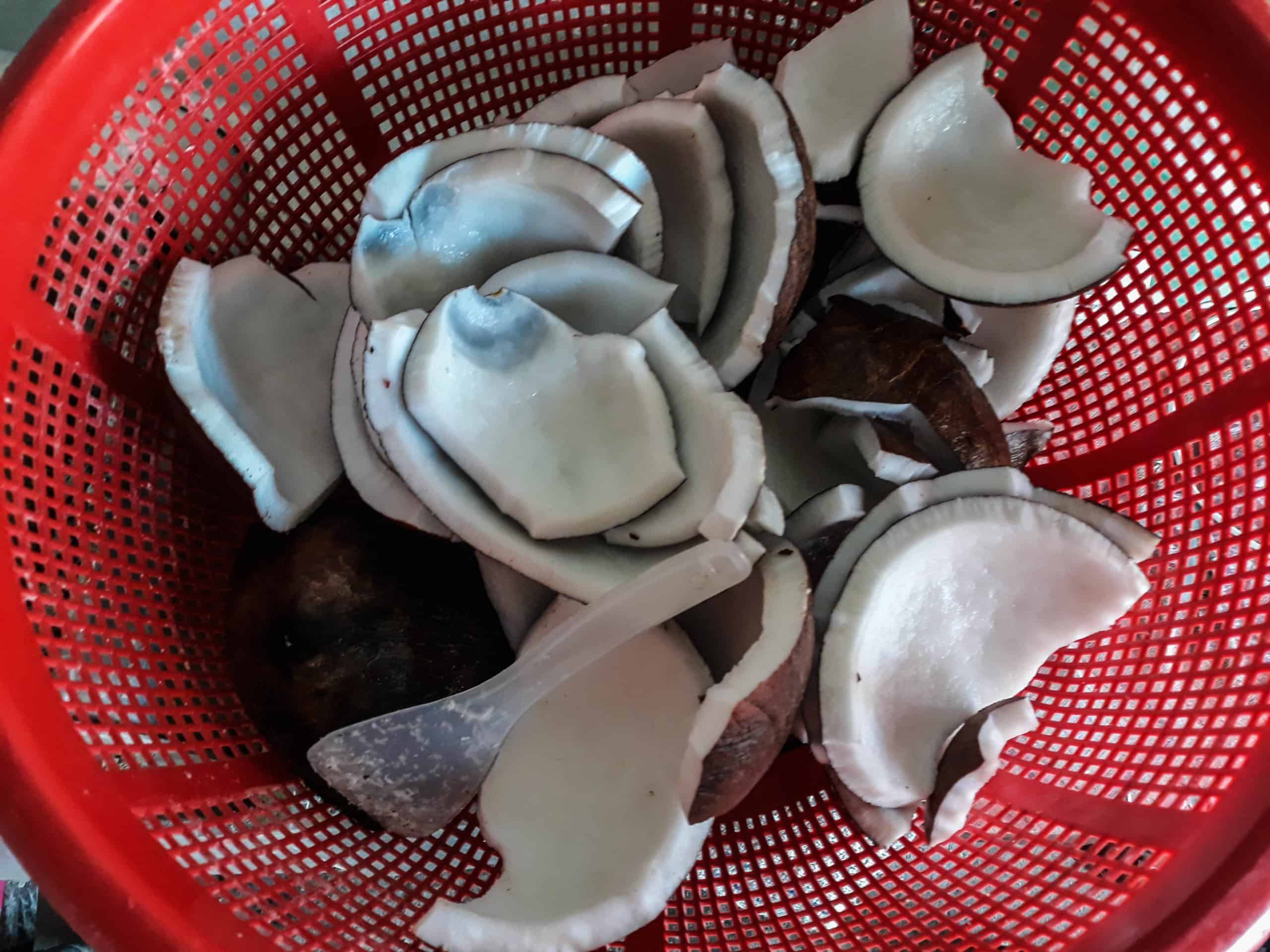
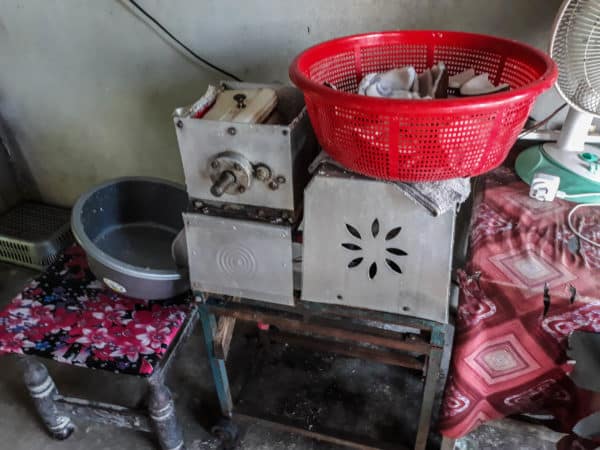
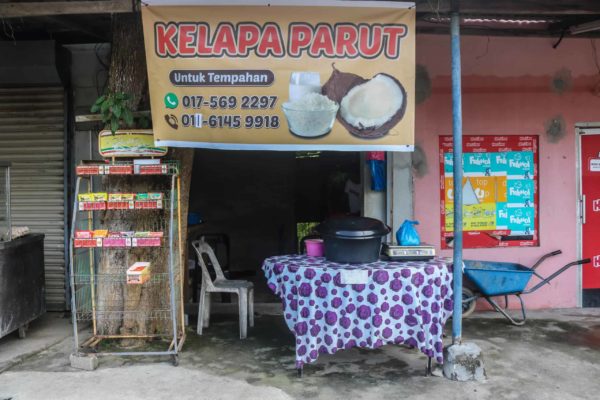
Two Basic Types of Coconut Oil
There are plenty of classifications of coconut oils, but for simplicity’s sake I’m sticking to two basic types of coconut oil; coconut cooking oil (made specifically for cooking) and virgin coconut oil. Traditional coconut cooking oil is made by heating coconut milk in a pot over a burner. The coconut milk is stirred continuously to prevent burning. The coconut oil will eventually rise to the top and can then be removed with a spoon or ladle. It will be a yellowish color. This oil making technique became popular in Malaysia during World War II. Basic cooking oil and lamp oil became either unavailable or too expensive after the Japanese military took control. Resourceful Malaysians made their own.
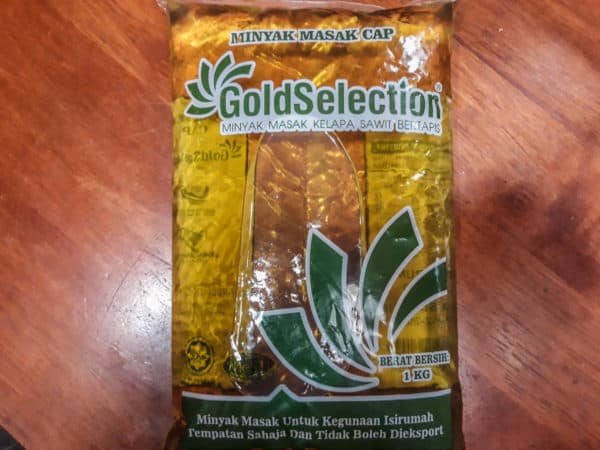
A popular by-product of this oil making process is known in Malaysia as Tahi Minyak (means oil shit in English). Tahi Minyak is the coconut milk residue left over after the oil is removed. It’s brownish in color and used as additional flavoring in Malaysian recipes or just eaten as a tasty snack. Probably another war time discovery by resourceful Malaysians.
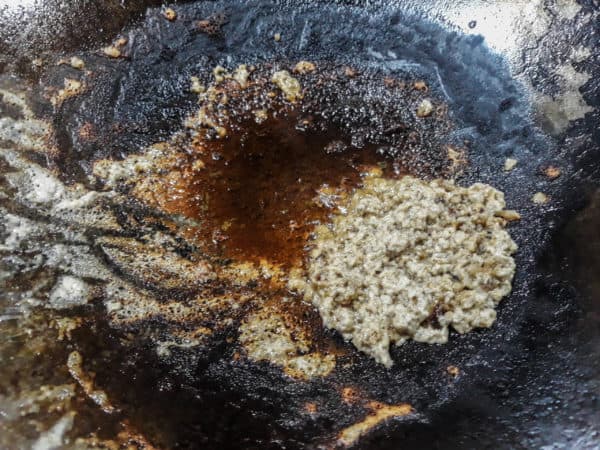
You can of course also use virgin coconut oil to cook with, but considering its typical retail cost as well as loss of nutrients above 350-degrees of heat, using designated coconut cooking oil is probably more practical as well as less expensive. In some countries, coconut cooking oil is mixed with other oils, such as safflower or corn oil and passed off as ‘pure’ coconut oil or even virgin coconut oil. It is often sold to unsuspecting consumers (or tourists). When buying ‘virgin coconut oil’ be even more suspicious if it comes packaged in a brown-colored glass bottle; the oil’s color is a dead give away (virgin coconut oil should be clear, not yellow or brown).
Now, true virgin coconut oil is a whole new ball game. No heat is involved what-so-ever.
Virgin coconut oil is an amazing by-product of coconuts. Its extraction can be a fascinating challenge as well. At least it has been for me. In recent years the health benefits of virgin coconut oil have been discovered. Coconut oil has been found to contain 50% lauric acid and has scientifically proven health and healing potential. The human body also has the ability to turn lauric acid into monolaurin; an important chemical that is also found in human breast milk.
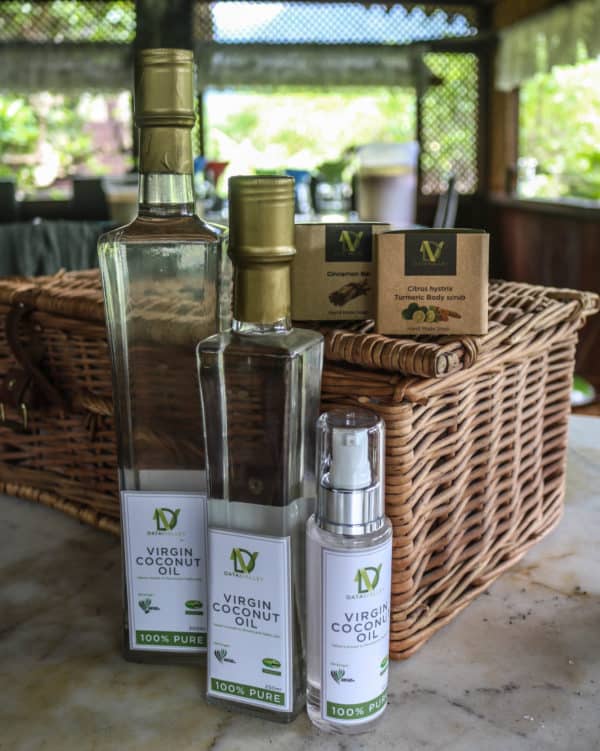
Monolaurin is used to build cells and body tissues as well as help kill harmful pathogens like bacteria, fungus and viruses. The purer (aka virgin, natural cold-processed) the coconut oil, the greater the nutritional and health benefits. Meaning the more lauric acid, the better. Virgin coconut oil can be used as a skin moisturizer, hair conditioner, used for oil pulling or simply taken orally as a daily nutritional supplement. You can of course also use it for cooking or for adding to healthier recipes that don’t require heat; smoothies, salads, etc.
Datai Valley Virgin Coconut Oil
I was first ‘properly’ introduced to the wonders of virgin coconut oil by Mardiana Shaari, a Langkawi Island local and owner of Datai Valley Virgin Coconut Oil. Although I had personally known Mardiana for several years already, I hadn’t realized that she had expanded her virgin coconut oil hobby into a full-fledged successful business venture. On my recent visit, it became apparent that she had also become quite the expert on the topic.
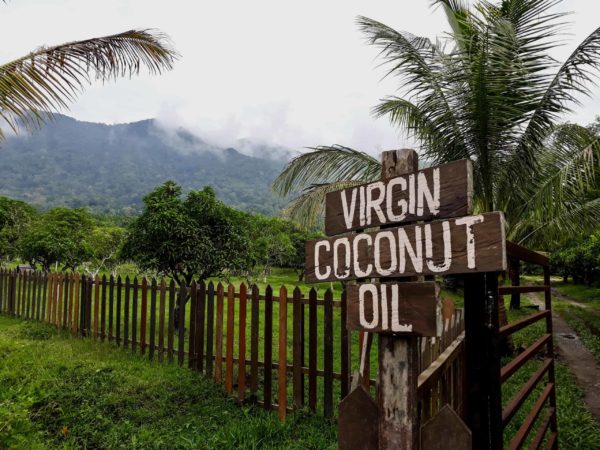
Watching her carefully go through each step of what is known as the ‘fermentation’ technique was quite an eye opener. She also explained the differences between the fermented versus cold-pressed coconut oil making processes; which are both relatively simple but an expertise truly mastered by hands-on experience. A lot of hands-on experience.
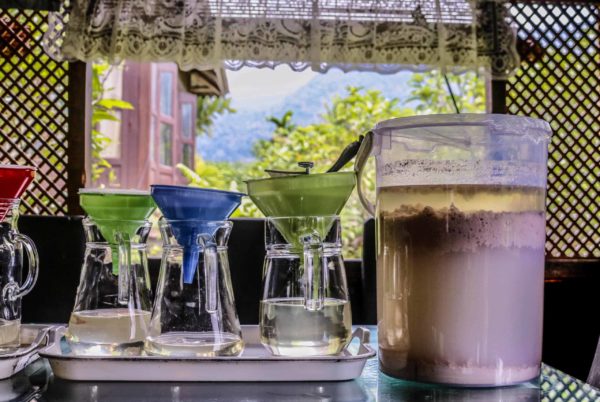
If you would like to buy some of the best virgin coconut oil made in Malaysia, you can email Ms. Shaari for more information. You can purchase her virgin coconut oil products (in person) at Datai Valley or she can make arrangements to have your order delivered world-wide.
Datai Valley Virgin Coconut Oil, Langkawi, Malaysia, [email protected], +6019-478 5060
However, if you would like to try making virgin coconut oil yourself, then keep reading!
How to Make Your Own Virgin Coconut Oil
(an almost easy way)
Although an exacting process, virgin coconut oil is relatively easy to make once you have the basic steps down. And of this writing, in the midst of a travel restricted pandemic, the one thing I have had is plenty of free time; to experiment with the process as well as take full advantage of Malaysia’s abundance of coconuts.
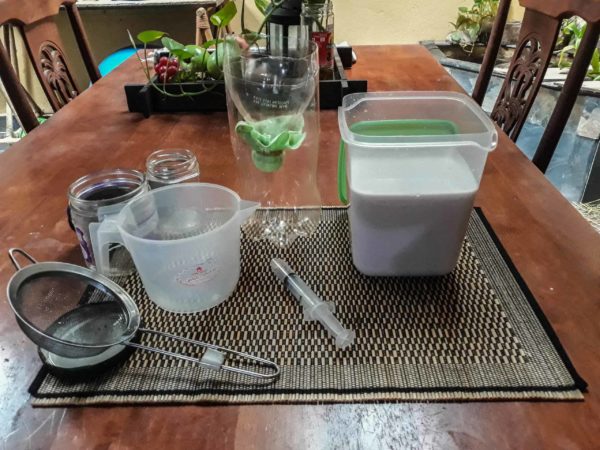
I initially tried to mimic Mardiana’s lengthy, fermentation method, but my results were just a failed, smelly mess. I scratched that off my list immediately. Thus my quick move to experimenting with the cold-processing techniques. Through my oil-making journey, my friend Sally Rahman, in Kuala Lumpur, has also shared with me some of her tried and true oil making technique tips.
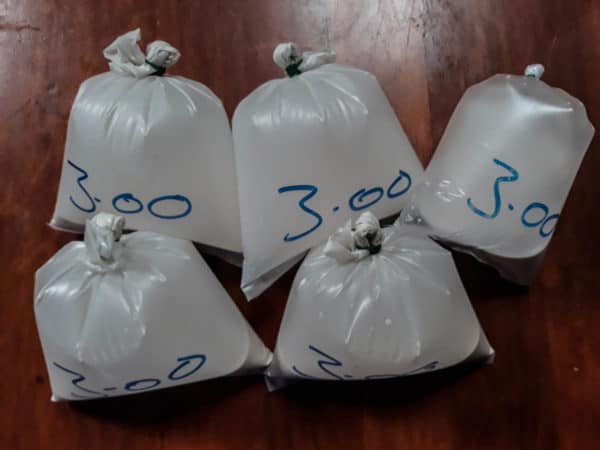
To make virgin coconut oil you start with fresh coconut milk (called ‘santan’ in Malaysia). How you get or where you get your coconut milk from is a factor in this process. And the amount of virgin coconut oil you end up with is not necessarily set in stone. If your milk has a lot of water in it you will obviously have less oil yield per X amount of milk. The coconut milk you use in one batch could have more water than another batch.
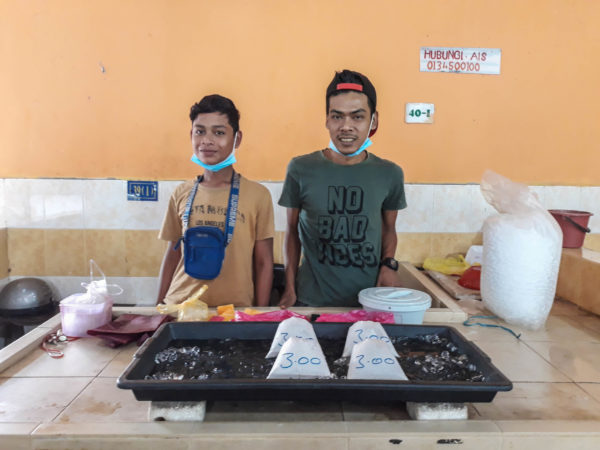
Another factor is the maturity of the coconuts used to make the milk in the first place; the more mature (but not dried-up) the coconut is, the more oil the coconut meat contains. The coconuts used to make the milk in one batch may not be as ‘aged to perfection’ and oil laden as a previous batch; the factors list goes on. If you are blessed with a good local source for fresh coconut milk, more power to you. If you decide to be hardcore and make your own fresh coconut milk from scratch, good luck! You Tube videos make it look quite easy, but in a nut shell (pun intended) I find it time consuming and not a whole lot of fun. But if you cannot find a good source of fresh coconut milk, making your own would be the way to go. But I highly recommend putting your grated coconut ‘meat’ in a laundry bag or cheese cloth before adding water. See below image as an example of how not to make coconut milk.
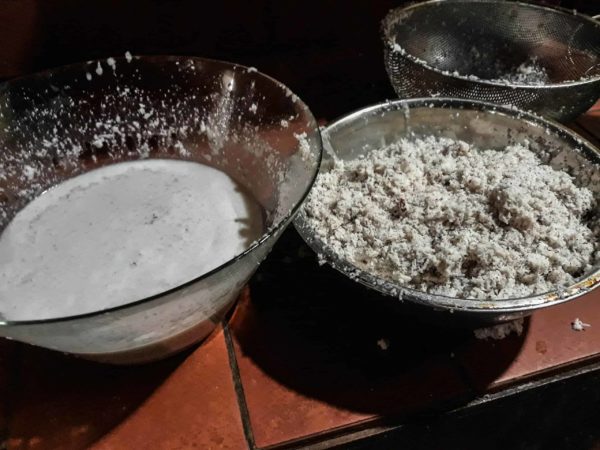
Here is the simple method I came up with that delivers a satisfying degree of success!
Ingredients:
1 liter of fresh coconut milk (fresh and completely natural)
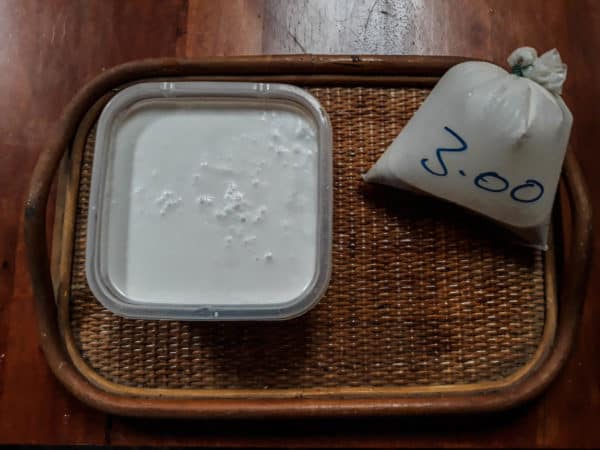
Step 1:
Leave the coconut milk in a container at room temperature for about 12-16 hours (or overnight) or until it has 3 visible layers. The top layer is curd, the middle layer is oil, and the bottom layer is water. Do not stir or agitate the milk, just secure the milk in a container that you can easily shift to a freezer in the next step. *Do note that if the milk you used has a lot of water in it, it may be difficult to differentiate between the lower two layers. Step two takes care of that.
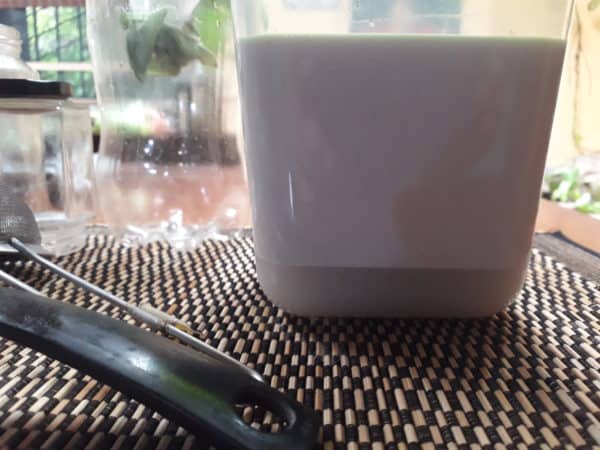
Step 2:
Put the container of coconut milk in the freezer for about 30 minutes. Long enough for the curd and oil to harden but not long enough for the water to freeze. If your coconut milk is not very oil laden, you will end up with a barely there middle layer.
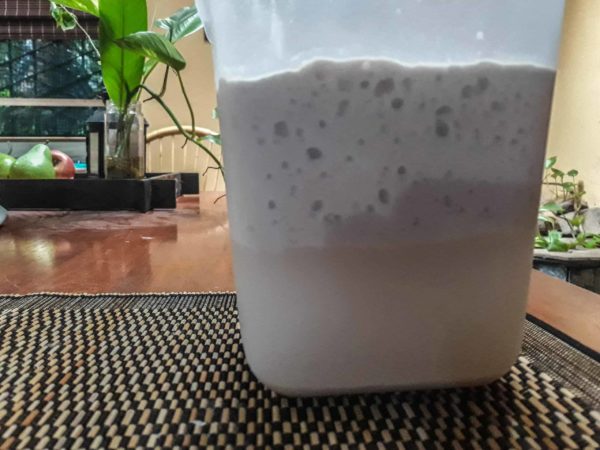
Step 3:
Remove the hardened coconut milk from the freezer. You should be able to simply pour out the watery bottom layer. The top two, more opaque (hard) layers you want to save.
Step 4:
If the oil layer is well defined it will be easy to just scrape off the top curd layer and save in a separate container. The clean solid oil layer is then placed in another container and left to melt at room temperature. If the room temperature is a bit cool you can wrap a towel around the container or let it sit (loosely covered) in a sunny spot until it becomes liquid.
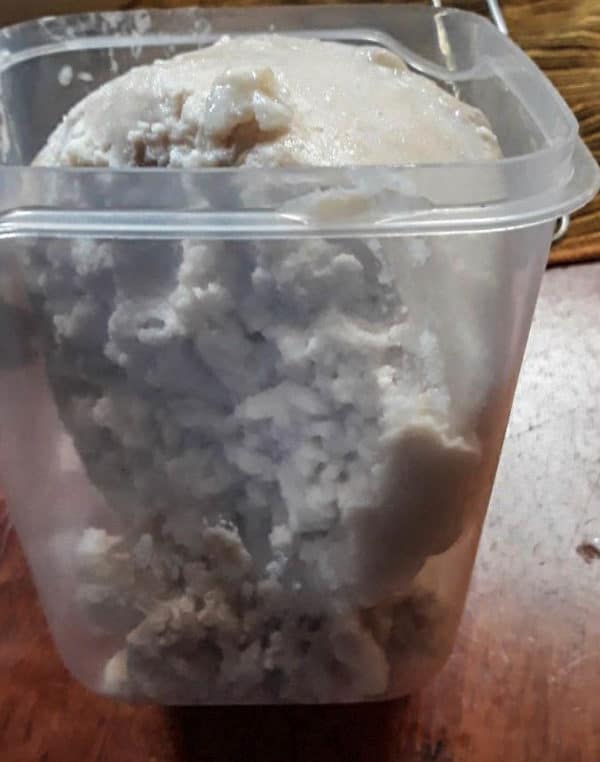
*If the coconut milk you use is ‘watered’ down a bit or the coconuts used were old and dried up, you might not see the amount oil you had hoped for or well defined layers. This happened to me a couple of times and I came to the conclusion that it was the quality of milk that was the issue. In fact, you can taste test your milk beforehand and decide for yourself if it’s creamy enough and worthy of your project. Save yourself some time!
Step 5:
If you have been successful so far, you should be able to visibly see your end product virgin coconut oil. It may look a bit cloudy, but if you stick your finger in it and it’s nice and oily, then eureka!
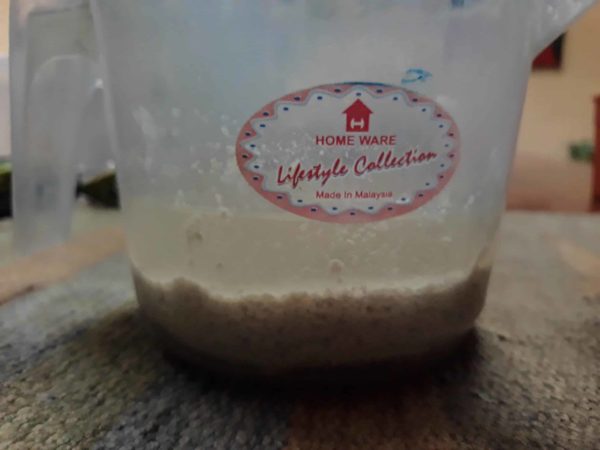
Step 6:
Now it’s time to filter your virgin coconut oil. Try to gently remove any bits of leftover curd first. Then pour or spoon your virgin coconut oil through a fine mesh strainer into your filter system.
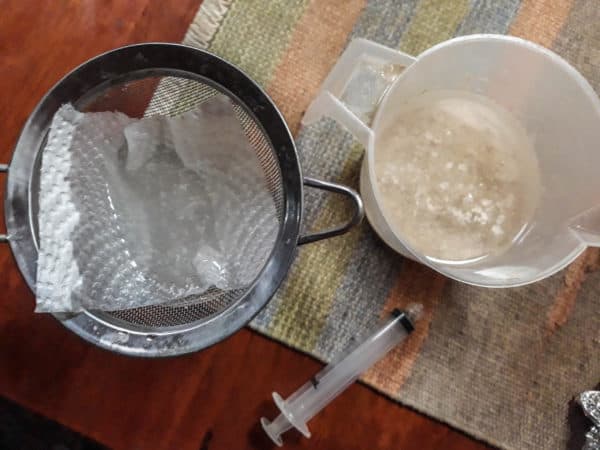
Step 7:
You can re-filter your oil one more time (in a fresh, clean filtering set up) to clear it up a bit. If I’m not in a hurry, I will refrigerate my new batch of oil for a few hours and then let it set at room temperature again. It will be hard and white when it comes out of the refrigerator, so it needs to ‘melt’ at room temperature before it can be re-filtered.
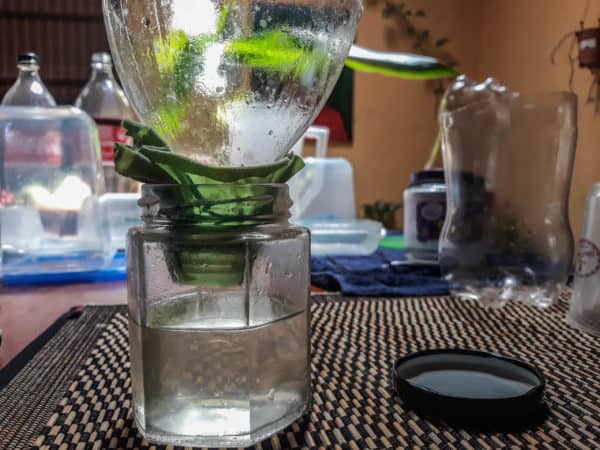
Step 8:
Once you have your oil as clear as you want, it is ready to use! And congratulations if you successfully made it to Step 8!
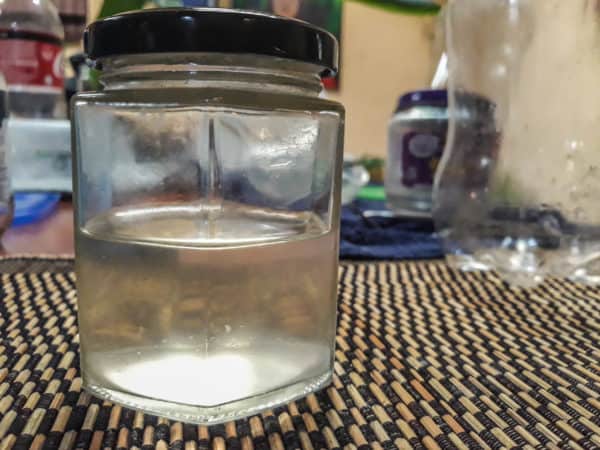
Pretty cool, right? But then maybe a half cup of virgin coconut oil is not enough to make it worth your while. So, if you’d like to increase your efforts here are a few general measurements to give you an idea of how many coconuts or how much coconut milk you will need to reach your virgin coconut oil making goals:
4 to 6 mature coconuts to make 1 kilo of coconut meat (shake to make sure they still have water inside)
2 kilo of coconut meat to make 1 liter of fresh coconut milk
1 liter of fresh coconut milk to make 4 to 5 ounces of virgin coconut oil

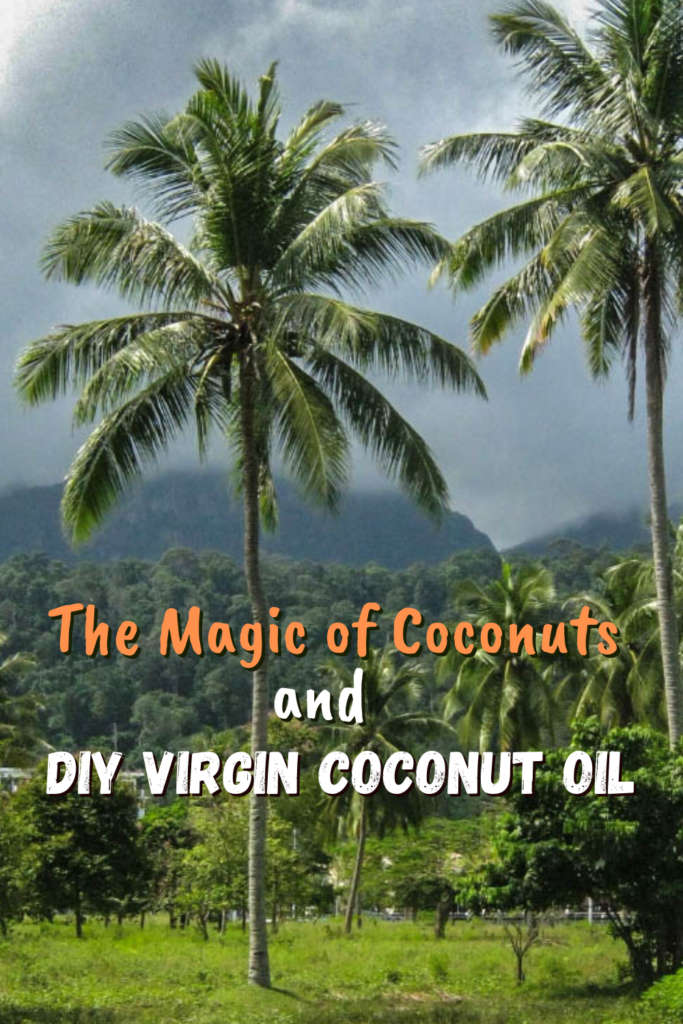

😄🥥I see the face….